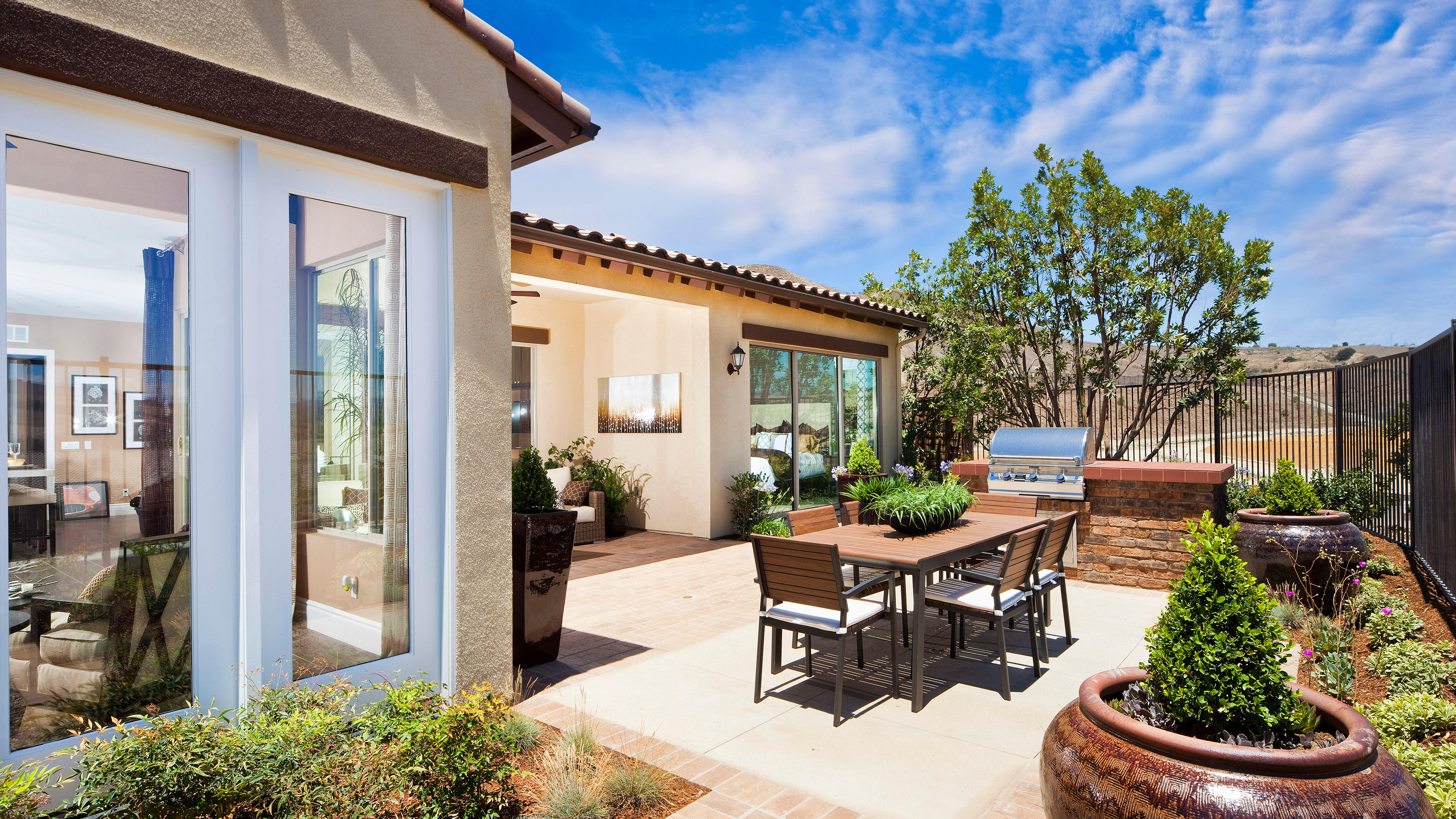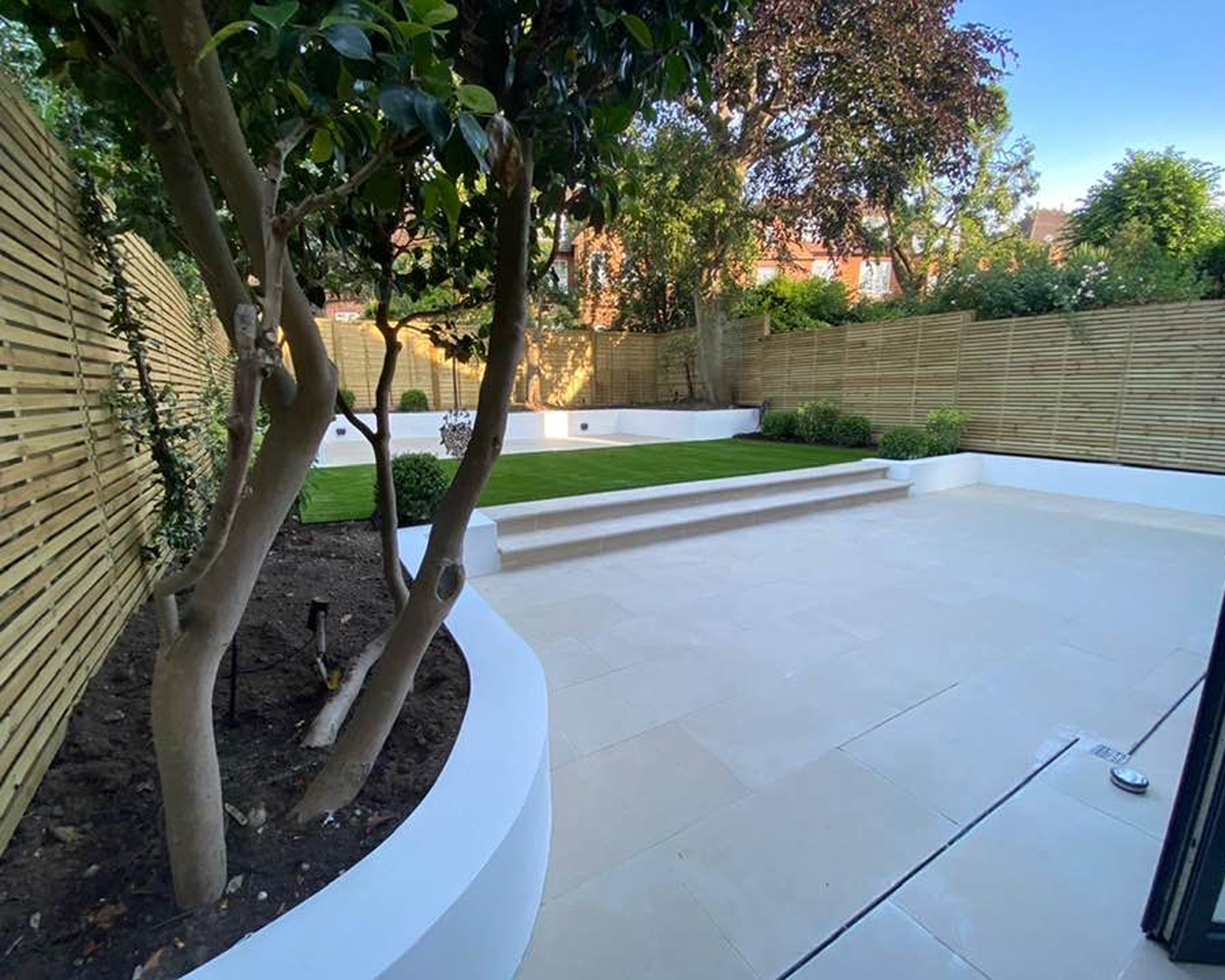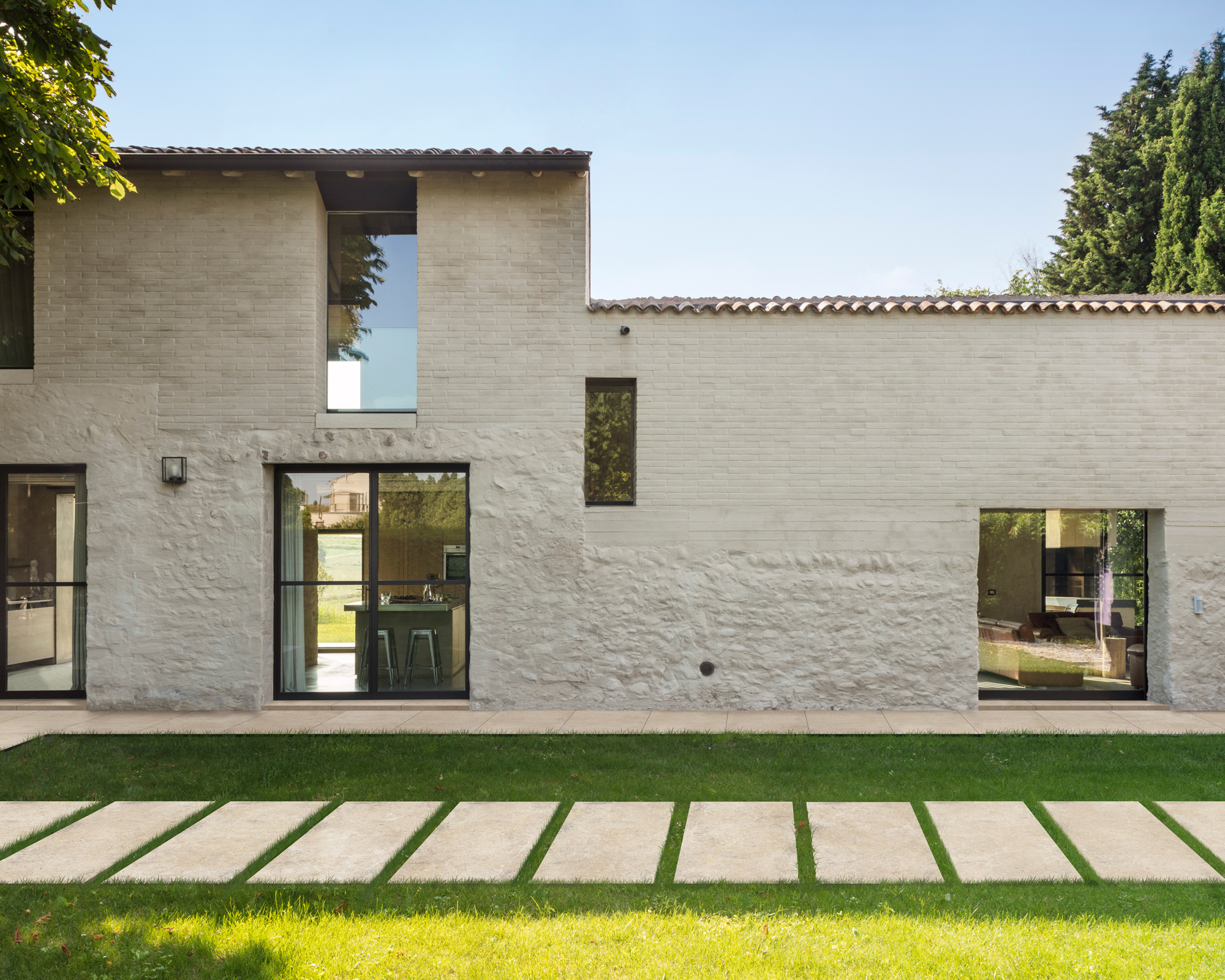Hot patio slabs scorching your feet? These are the best type of paving stone for hot weather
Landscaping experts share the best type of paving stone for hot weather to help keep your cool outside - whatever the weather

Many of us are really feeling the heat in our backyards right now, with heatwaves making gardens very hot in many parts of the world.
One of the most undesirable effects of hot weather is paving that is just too hot to even stand on, scuppering any patio ideas that involve barefoot walking. This is especially inconvenient if the patio is adjacent to a swimming pool.
Fortunately, choosing your paving carefully will help you avoid getting your feet scorched after getting out of the pool. These are the best types of paving stone for hot weather, according to landscape designers and paving specialists.
The best type of paving stone for hot weather

One of David Andersen's patios for a garden in Putney
Unsurprisingly, the top paving ideas that reduce heat are all light-colored. As a rule of thumb, no matter what paving materials you choose, you should always go for a light color as it reflects rather than absorbs heat.
'Among the best paving materials for reducing heat are limestone and sandstone,' says David Andersen, design director at David Andersen Garden Design. 'These are typically used in hotter climates as their light color reflects heat, making them a comfortable temperature to walk on no matter how hot the sun shines.'
Natural stone patios have many benefits, including durability and easy maintenance with the best patio cleaner. However, they are on the expensive side of patio materials. If you want something cheaper, or you just don't fancy the stone slabs, David recommends brick, which 'also performs well in hot weather; like sandstone and limestone, it is resistant to cracking and doesn’t transmit heat.'
The best manmade patio paving for hot weather

Eden Limestone Fawn porcelain paving, Brett Landscaping
As far as manmade patio materials go, porcelain wins hands down as the best material to prevent a patio from overheating. The cooling properties of porcelain have been known for millennia, with the material once used for making pillows by ancient civilizations because it would keep cool at night.
Jamie Gledhill, who is Brett Landscaping’s Engineering Technical Manager, explains porcelain's benefits as a great option for both traditional and modern paving ideas: 'Porcelain is less likely to heat up than most other paving materials, making it much more comfortable to walk on underfoot.'
Again, it's important to seek out lighter-colored slabs, although even darker slabs in porcelain will be cooler underfoot than dark stone. Jamie says that a trendy 'cream or fawn color will reflect even more heat than the darker colors. Porcelain is also more hard-wearing and easier to maintain than other materials.' Oversized porcelain slabs look especially gorgeous as part of small patio ideas.
Will painting my patio white make it cooler?
If repaving your patio is out of the question this summer, you might be wondering if painting your patio could have the same desired cooling effect. While technically painting your patio a lighter color should help reflect rather than absorb heat, sadly, it's not a good idea.
David says that 'unfortunately, painting an existing patio white doesn't really work, as the paint will flake and crack under the elements.' It's also highly unlikely you'll get an even finish, especially if your slabs are made from a porous stone.
If your patio is dark and is getting unbearably hot, placing one of the best outdoor rugs under your feet should ease the problem. Alternatively, consider investing patio cover ideas to help keep the heat off your paving.
Anna writes about interior design and gardening. Her work has appeared in Homes & Gardens, Livingetc, and many other publications. She is an experienced outdoor and indoor gardener and has a passion for growing roses and Japanese maples in her outside space.
